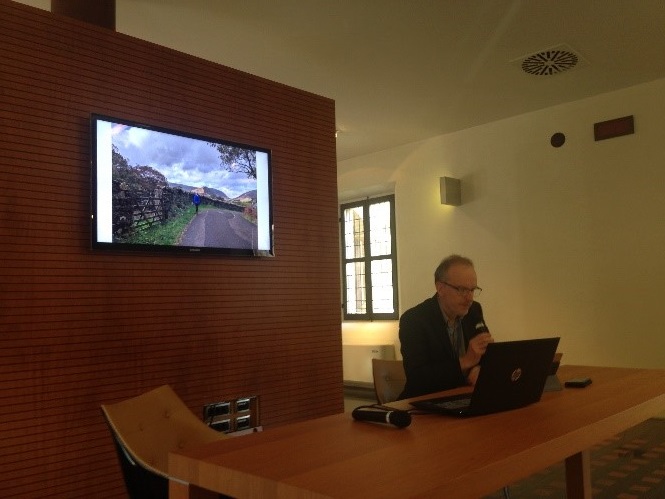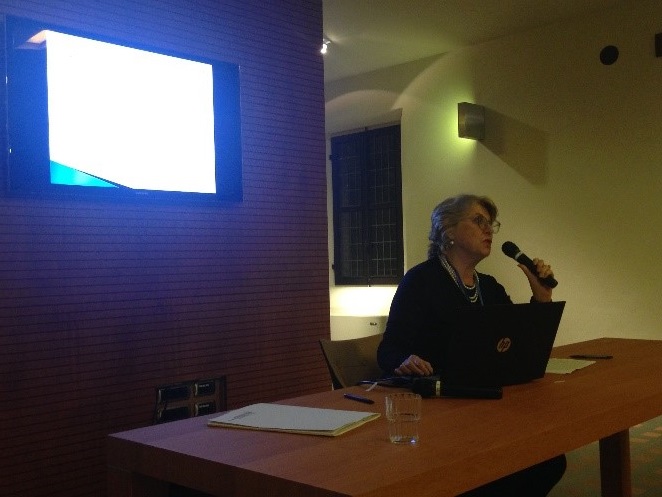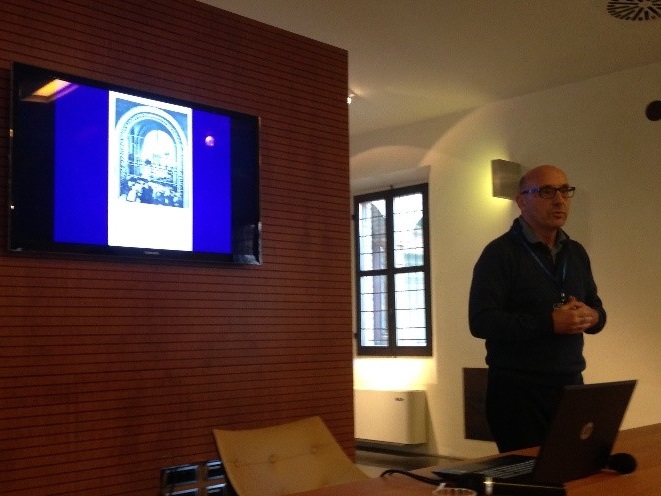Dreaming Romantic Europe: Workshop 2 “Romantic Authorship”
On Friday 18th October 2019 members of European Romanticisms in Association (ERA) were lucky enough to gather in the beautiful Italian city of Ravenna for the second meeting of the AHRC funded Dreaming Romantic Europe network, headed up by PI Professor Nicola J Watson (The Open University) and Co-I Professor Catriona Seth (University of Oxford). The workshop, which took place in the Antichi Chiostri Francescani, next door to Dante’s tomb and just a short walk from Lord Byron and Teresa Guiccioli’s home in Ravenna, addressed the theme of “Romantic Authorship.” Over two days, delegates explored how the ideology and celebrity of Romantic authorship was supported, elaborated, and transmitted by objects through a fast-paced series of diverse, original, and thought-provoking presentations. We were delighted to welcome speakers working in academia and heritage across Europe, with representation from France, Germany, Hungary, Italy, the Netherlands, Poland, Switzerland and the UK.
On Friday, attendees began the day with an introduction to the project from Professor Nicola Watson before making the short walk to Palazzo Guiccioli, home of Countess Teresa Guiccioli, where Lord Byron lived between 1819 and 1821. The building is also the location of the forthcoming Museo Byron, which is currently under construction. Once complete the museum will house material on poet, the countess and their relationship along with further galleries dedicated to the history of the Risorgimento. Delegates were treated to an exclusive tour of the building, led by Professor Diego Saglia before returning to the Chiostri Francescani for the first round of presentations. Using the model of our successful first workshop at Maison de Chateaubriand, La Vallée-aux-Loups in November 2018, the afternoon sessions took the format of ten minute talks on a single object, suitable for exhibit in Romantic Europe: the Virtual Exhibition (RÊVE). What followed was a series of incisive and insightful papers which explored both the objects of Romanticism and their role in shaping the celebrity of those who owned, created, used or encountered them. Clustered around five broad themes - “Placing and Displacing the Author,” “Authorial Affinities Across Europe,” “The Author and Posterity,” “Contact-Relics and Imaginary Conversations” and “Other Arts,” the presentations dealt with a huge variety of objects. From items of clothing and manuscripts, to ballets, buildings and lost objects, speakers explored both the materiality and immateriality of European Romanticisms. With lots to think about following a wonderful first day, delegates were able to continue conversations over the workshop dinner.





Saturday got underway with an excellent cluster of talks which together presented a collection of proposed RÊVE exhibits focused on the “Author In/And a Landscape”. The rest of the morning was dedicated to reflections on collaborations, communities, collections and the opportunities for developing the virtual exhibition in these areas. Attendees heard about a number of exciting projects and organisations which could provide RÊVE with future collaborators and models, including: the Museo del Risorgimento, Bologna; The Antique and Romantic Skies in Europe project; the Swiss Guestbook project; the Keats House Museum; Deutsches Romantik Museum, Frankfurt; Maison de Chateaubriand; and the Wordsworth Trust. Lastly, the workshop drew to a close with an activity to create collections, with participants exploring a gallery of images from the virtual exhibition which were displayed around the room, before proposing themed collections into which the objects could be gathered. As the delegates prepared to depart and to make the most of their remaining time in Ravenna, the group reflected on the workshop and RÊVE, recording a virtual audio guestbook of responses to the project.
Overall the workshop was a huge success, generating a wealth of new ideas about and approaches to the objects of European Romanticism. We’d like to extend our thanks to everybody who made it possible through their hard work, organisation, and sponsorship, particularly the Fondazione Cassa di Risparmio di Ravenna, Erika Fabbri, the Museo Byron, Professor Diego Saglia and all of our participants whose exhibits we look forward to featuring in RÊVE in the near future.
Explore the virtual exhibition, and follow us on Twitter @euromanticism
